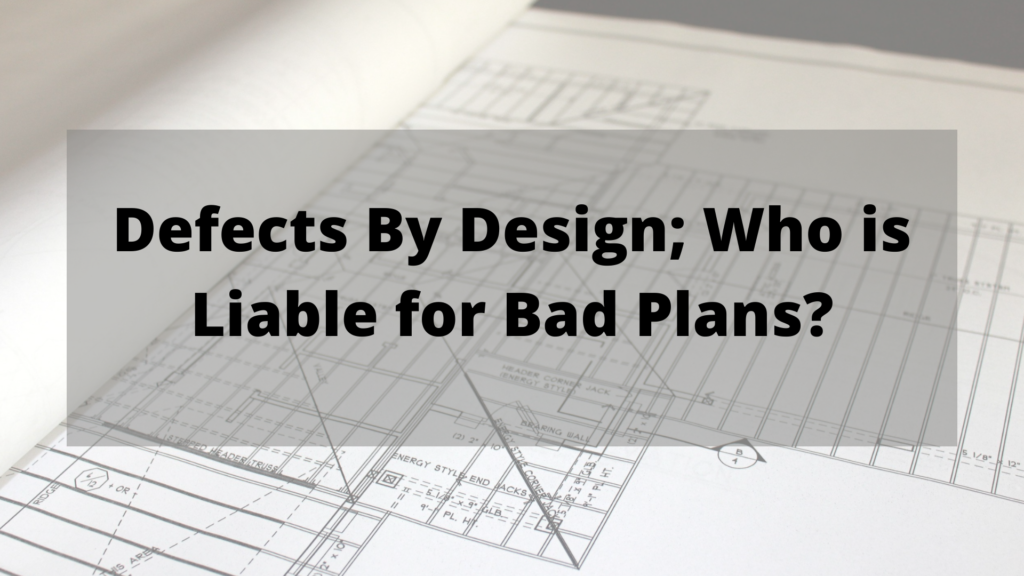
Construction is filled with countless risks, from weather conditions, labor strikes, material unavailability, subsurface conditions, inaccurate plans, and specifications, among others variables. Each has the potential to delay the project, cause increased completion costs, and increase the likelihood of disputes, liens, or litigation. Problems stemming from inaccurate plans and specs can quickly become the obstacles of others beyond just the design professional itself.
It is certain that New York construction law imposes principal responsibility for plan and specification accuracy on the design professional itself. The design professional is required to use the degree of skill, knowledge, and judgment generally used by other design professionals in the same geographic area.
However, the issue becomes more complicated where an owner has its architect prepare plans and specifications and provides them to its contractor. As between the owner and the contractor, it is the owner who bears the risk of any deficiencies in the structures. This allocation of risk, known as the Spearin Doctrine, stems from the 1918 United States Supreme Court matter of U.S. v. Spearin, 54 Ct. Cl. 187, 248 U.S. 132.[1]
In the Court matter, the contractor was constructing a federal dry dock, with the plans and specifications provided by the owner. The plans failed to show a dam, which later failed and caused the dry dock to flood. The Court found that in issuing the plans, the owner extended an implied warranty to the contractor, warranting that the plans and specifications, if complied with, would be adequate for its intended purpose.[2]
Where a contractor has reason to believe that some error, oversight, or defect exists in the plans and specifications provided to it by the owner, the contractor should notify the owner promptly of these claims (preferably in writing). Where such a defect is not noticed by any party until after bidding, the plans would then arguably be defective under the Spearin Doctrine.
A contractor under New York construction law is charged only with constructing the project in conformance with the designs and to point out to the owner any deficiencies in those provided plans that are discovered. This does not rise to the contractor having responsibility for any damages it fails to notice.
 The author, John Caravella Esq., is a construction attorney and formerly practicing project architect at The Law Office of John Caravella, P.C., representing architects, engineers, contractors, subcontractors, and owners in all phases of contract preparation, litigation, and arbitration across New York and Florida. He also serves as an arbitrator to the American Arbitration Association Construction Industry Panel. Mr. Caravella can be reached by email: [email protected] or (631) 608-1346.
The author, John Caravella Esq., is a construction attorney and formerly practicing project architect at The Law Office of John Caravella, P.C., representing architects, engineers, contractors, subcontractors, and owners in all phases of contract preparation, litigation, and arbitration across New York and Florida. He also serves as an arbitrator to the American Arbitration Association Construction Industry Panel. Mr. Caravella can be reached by email: [email protected] or (631) 608-1346.
The information provided on this website does not, and is not intended to, constitute legal advice; instead, all information, content, and materials available on this site are for general informational purposes only. Readers of this website should contact their attorney to obtain advice with respect to any particular legal matter. No reader, user, or browser of this site should act or refrain from acting on the basis of information on this site without first seeking legal advice from counsel in the relevant jurisdiction. Only your individual attorney can provide assurances that the information contained herein – and your interpretation of it – is applicable or appropriate to your particular situation. Use of, and access to, this website or any of the links or resources contained within the site do not create an attorney-client relationship between the reader, user, or browser and website authors, contributors, contributing law firms, or committee members and their respective employers.
[1] Not all states follow the Spearin Doctrine.
[2] the Court also found that this warranty could not be avoided by requiring contractor to examine the site, plans, and specifications prior to entering the contract. As such, contractors can typically recover extra costs incurred to overcome design defects
This is a general information article and should not be construed as legal advice or a legal opinion. Readers are encouraged to seek counsel from a construction lawyer for advice on a particular circumstance.
